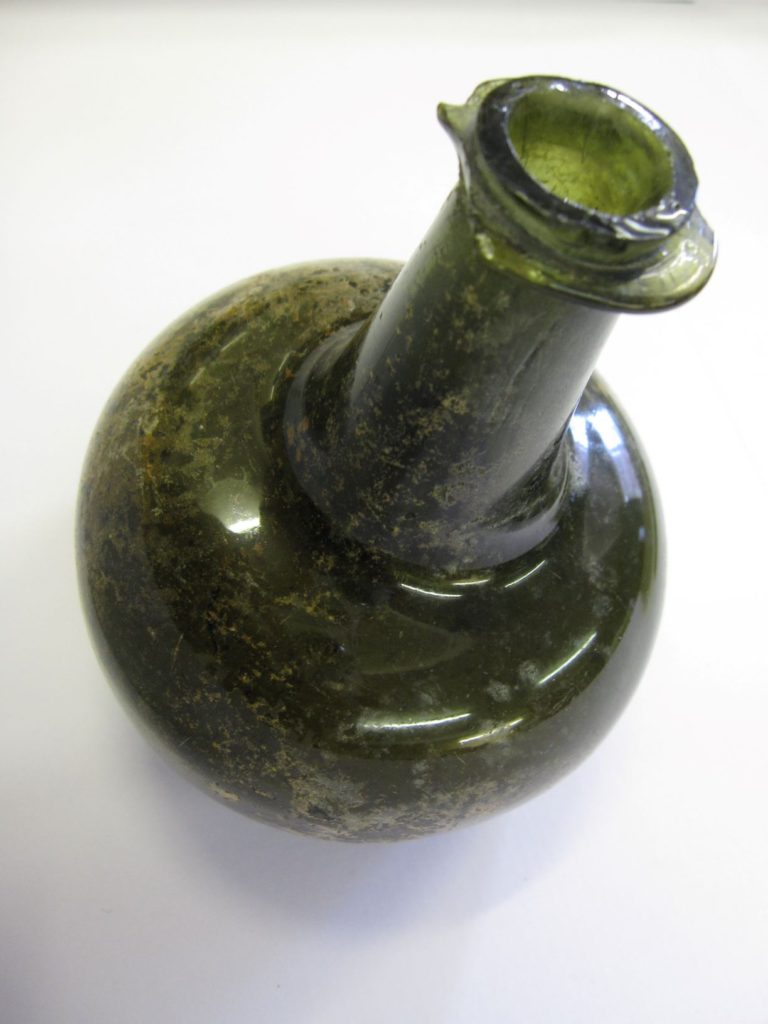Behind the Glass: Early Modern
The Egham Museum tells the story of Egham, Egham Hythe, Englefield Green, Thorpe and Virginia Water from pre-history to the present day.
We’ve divided these stories into six sections.
Pre-Historic Egham
Medieval Egham
Georgian Egham
Victorian Egham
Egham at War
Post-Way Egham
Our Behind the Glass series gives you a tour of the items in the cases, you can see them all together in our Museum Tour video below.
Early Modern Egham
The Tudor and Stuart Period (1485-1714)
One of the most notable Tudor buildings found locally is Great Fosters, built in 1559 as a hunting lodge. It was used by Henry VIII and later, Elizabeth I.
In 1603, 68 plague related deaths were recorded in the register of St John’s Church, the first was 11-year-old Mercy Bullen. Perhaps the plague has been brought to Egham by her father, collar-maker William Bullen who, during his business travels, may have entered a plague-infected area and spread the disease to his children and neighbours?
Egham was only a day’s ride from London and became a main staging post to and from the West of England. People passing through in horse-drawn coaches would stay overnight at one of the coaching inns. Once of the oldest inns in Egham is thought to be the Catherine Wheel, established in 1668.
In 1705, funds from the Will of Henry Strode were used to set up a ‘good and substantial schoolhouse… for the learning and edifying of the poor children of the Parish of Egham’. Today we know this as Strode’s College. Find out more at https://eghammuseum.org/henry-strode-and-his-legacy/
The Georgian Period (1714-1837)
During the 18th Century, Egham was a small town with a busy High Street home to many local trades and businesses. Travelling along the highway through Egham, and crossing Staines Bridge, could bring its own dangers. There were many recorded incidents of highway robbery in and around Egham.
The first horse racing event in Egham began in 1734 on Runnymede Meadows. The races took place over three days and racers had to sign up at the Red Lion public house. The races became a popular annual event and soon a coach service from London to the racetrack was provided for spectators. The event was often attended by royalty, transforming it into a fashionable society event. Pick-pocketing and rowdy crowds eventually led to its demise in 1889. You can find out more about the Egham Races at http://eghammuseum.org/egham-races/
Other leisure activities in the 18th century could be found at the Assembly Rooms in Egham, now known as the Literary Institute, home to the Egham Museum. It was built around 1788 as part of the Red Lion to provide facilities for entertainment such as dancing, dining, card-playing and theatricals.
Patch Box (CER26) produced in Bilston, Staffordshire (now located in the West Midlands) in c.1770. Bought for the museum collection thanks to a grant from the Art Collections Fund. The top is made from enamel with a pattern and “a trifle from Egham” inlaid. Patches were popular with ladies of high fashion and often stored in beautifully decorated little boxes.
Cast iron sign (MC462) Ordnance Survey Benchmark from the early 19th Century
Glass bottle seal (CER267), excavated at 133-139 High Street, Egham in 1980s. Estimated to have been made in around 1690.
Redware pot (CER275), excavated from 174 High Street in 1978. This is an example of a colourman’s pot. It contains remains of red, white and blue paint and can be dated to around 1760.
The style of this pot is identical to those of contemporary chamber pots, and the use of both forms of pot is illustrated in Hogarth’s paintings. Paint pots of this nature were created as recently as the 1930s, and so this artefact provides us with an insight into not only the design behind craftsman’s tools, but also the way in which its technology has evolved or endured throughout the ages.
Larkin Card (DOC595) from Egham Races dated Tuesday August 20, 1861. Printed by Richard and William F Larkin, Magna Charta Printing Office, Egham. A Larkin card is similar to a bet table and featured information about the races themselves, along with the prize pool or stake available to win. The three day event was stewarded by Admiral John Rous, who served during the Napoleonic Wars, and was a strong supporter of horse racing. The currency used for race rewards was either Sovereigns (pounds) or Guineas (21 shillings), with winnings increasing based on the weight carried by the horse.
Green glass wine bottle (CER151) This early 18th century ‘onion’ bottle was probably used to store wine and served to customers at Egham’s many local inns.
Coins
Pounds, shillings and pence (written £, s, d) were used in Britain as early as 1066 until decimalisation in 1971. There were 12 pennies in a shilling and 20 shillings in a pound.
George I 1/2d, 1723
George II 1/2d, 1754
George III 2d ‘Cartwheel’, 1797
Charles II 1/2 d, 1667-69
Wellington 1d token 1813 (MC 1006)
Carrier token
During the 17th century, carrying bundles of money became too inconvenient due to the chance of robbery. Credit tokens such as this one were used and exchanged in the same way that cheques are used today.





